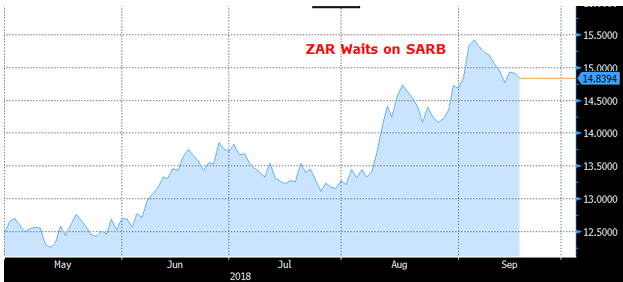By XE Market Analysis
- The USTR adds a 10% levy on $200 billion worth of Chinese goods.
The South African Rand is consolidating after sliding nearly 7.5% against the Greenback. Turmoil in Emerging markets and local conditions is making investors nervous. The market is now in Wait-and-See mode ahead of the release of inflation number and the Central Bank's policy meeting. Inflation SARB is expected to keep rates on hold but is taking a more hawkish outlook.

The US Administration followed through with its big sticks and fewer carrots trade policy, imposing more taxes on Chinese imports. The USTR released a list of about $200 billion worth of Chinese goods that will be subject to more tariffs, effective September 24th at 10%. The Administration is, however, leaving the door ajar for trade talks and in case of failure, the level of taxes will go up to 25% come January 1st, 2019. The initial market reaction is muted despite the price of Chinese frogs jumping higher; this move is already priced in. The Shanghai Index is even trading higher by 1.4%, and the EM market is quiet except for the Turkish Lira (down 10.7%). In the absence of major macro data releases, we expect the market to trade with cautious with an eye on the CNY and retaliatory actions from Beijing.
Dollar-Yen seems to have shrugged off the effect of the latest US taxes on Chinese goods. The pair is staying close to the upper end of a consolidation zone near 112. Investors are keeping an eye on the Bank of Japan today. The nation's central bank is expected to stick to its current monetary policy plan. No change is expected at the leadership vote of Japanese Liberal Democratic Party. PM Abe is on course to be re-elected for a third three-year term.
